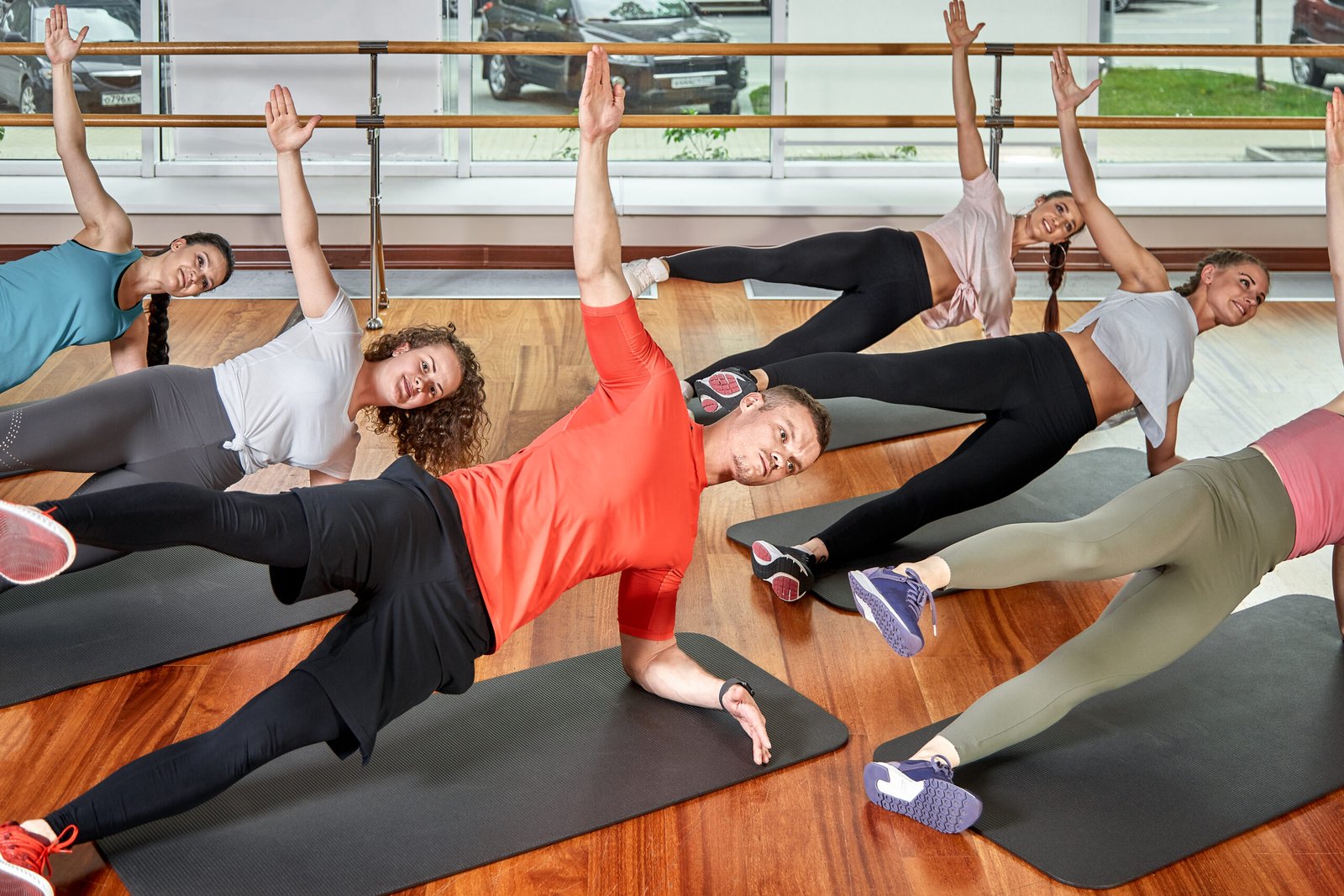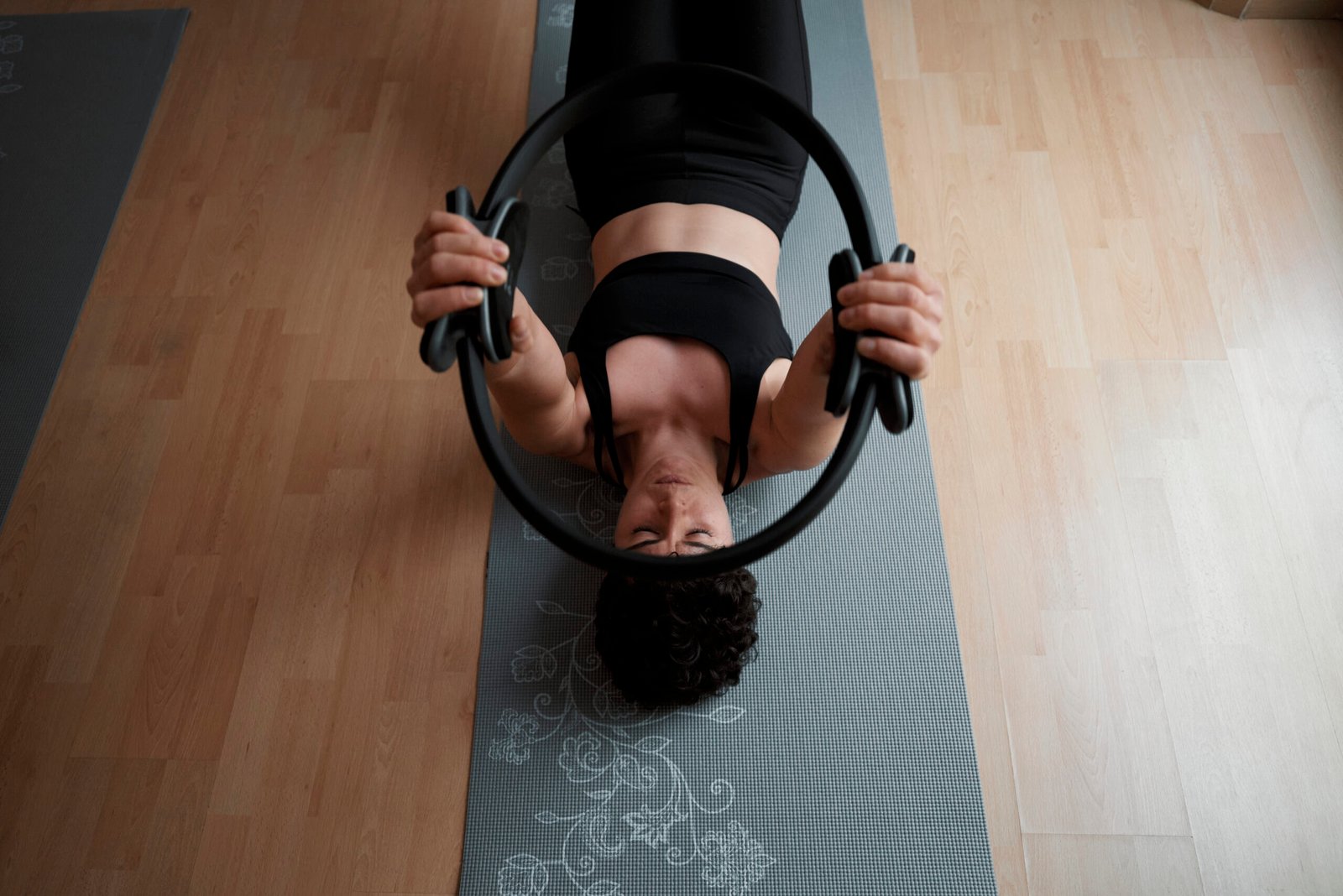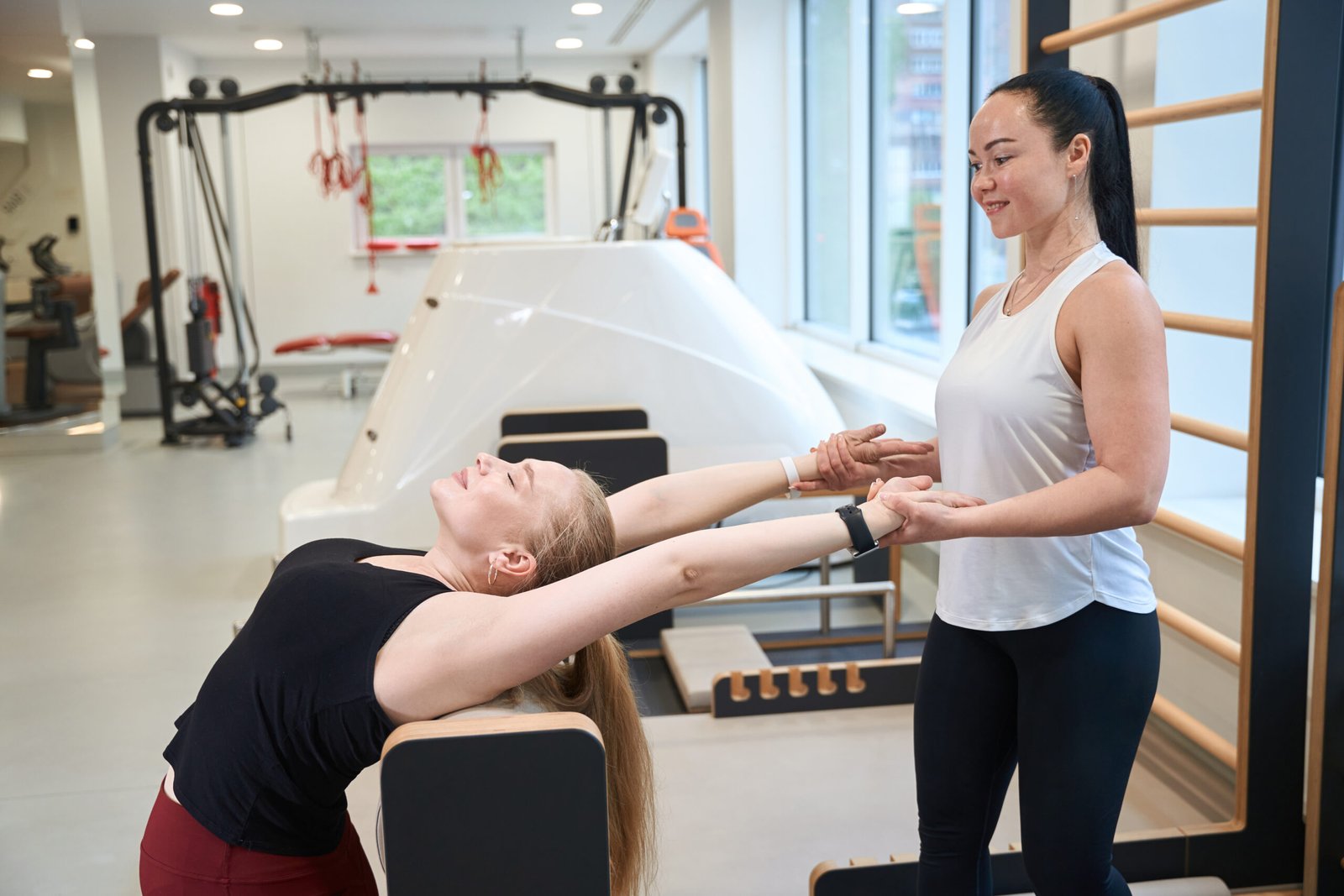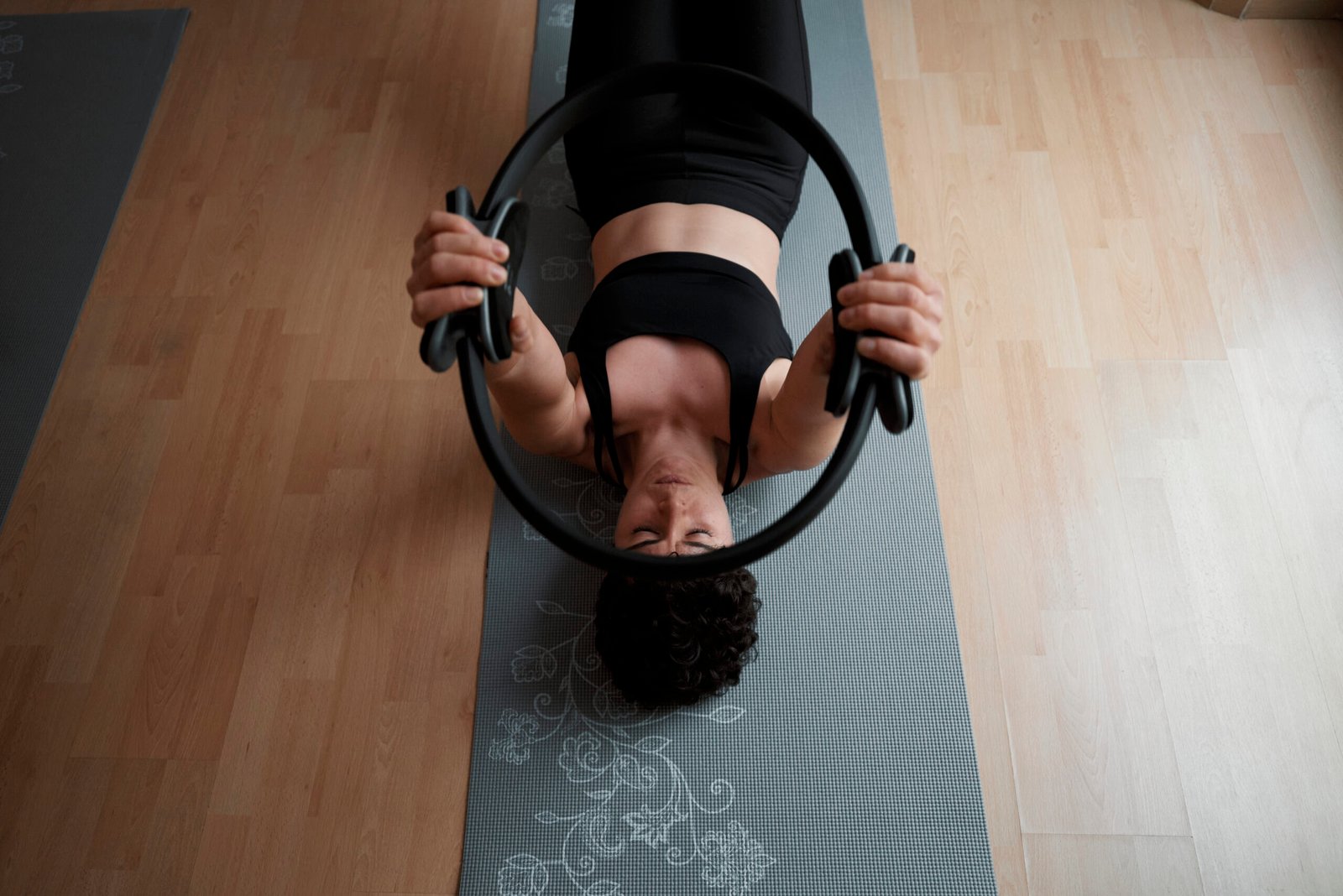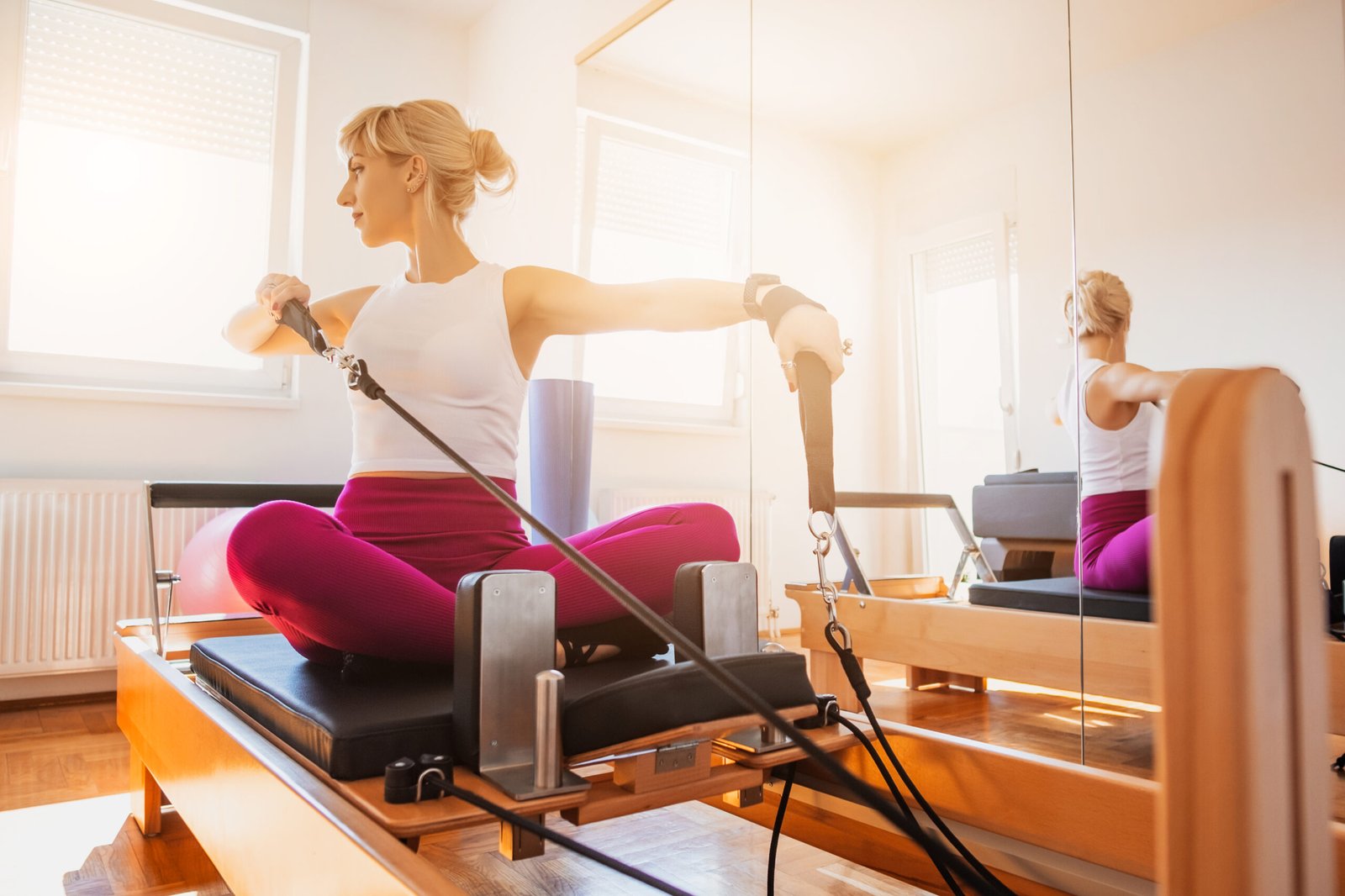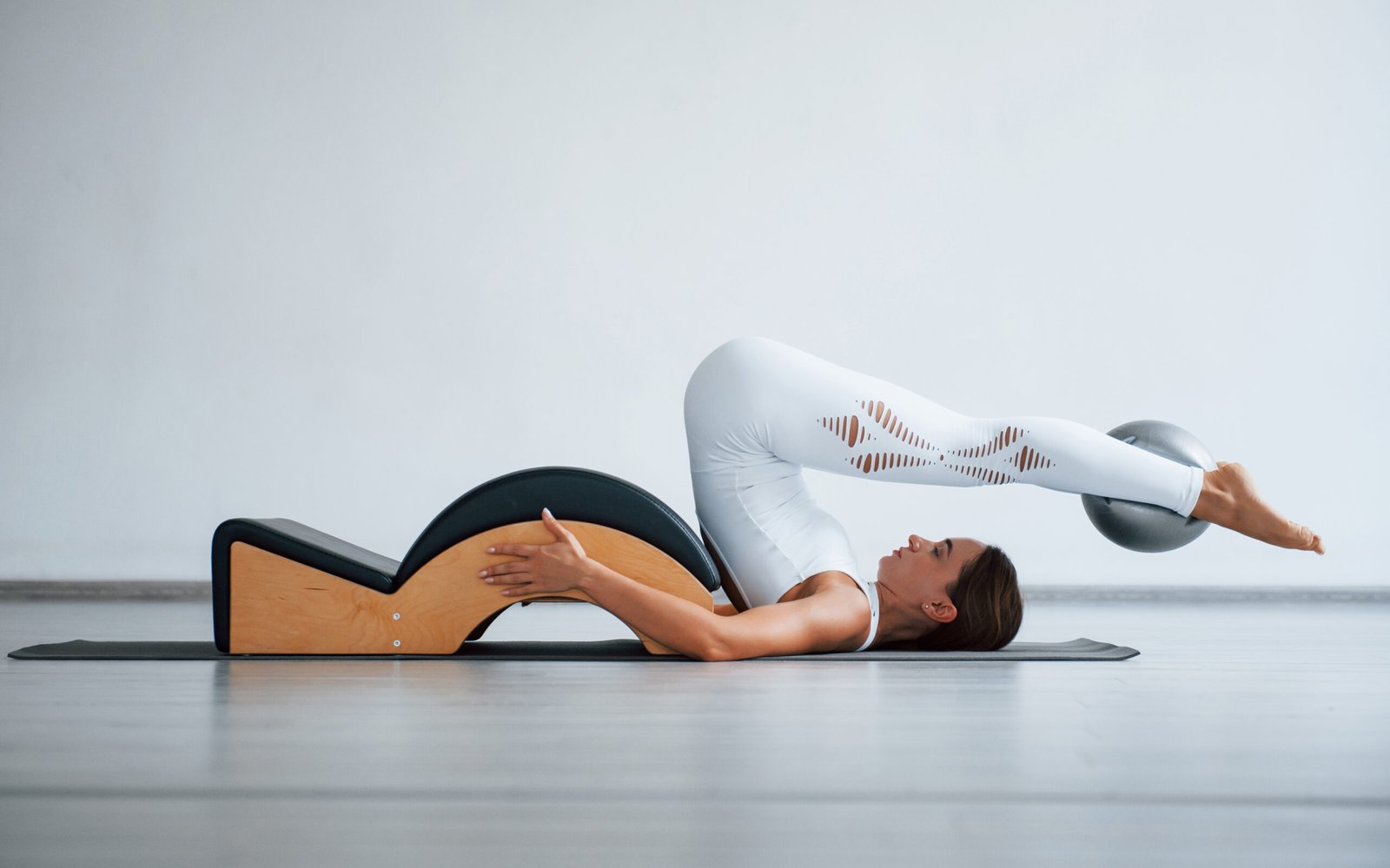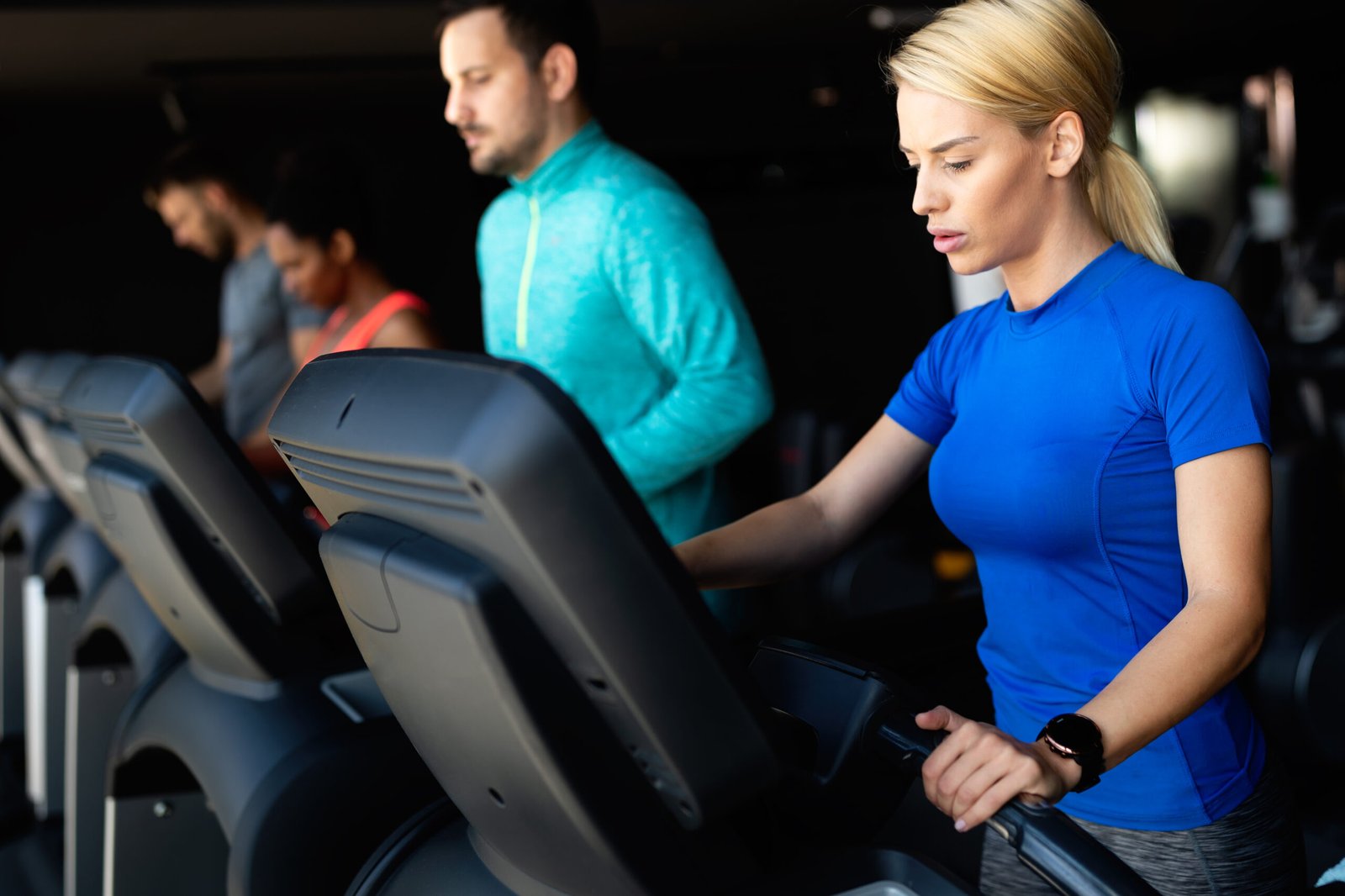In today’s fast-paced digital age, where prolonged sitting and hunching over devices has become the norm, maintaining good posture can be challenging. However, a strong and engaged core, fostered through Pilates, can transform your standing and sitting habits, leading to better posture and an improved quality of life. Pilates, a low-impact form of exercise emphasizing core strength, flexibility, and mindful movement, may just be the solution you need. This blog post will explore how Pilates can positively influence your posture, addressing common issues faced by office workers, older adults, and anyone seeking improved body alignment and confidence.
Pilates Tips for Better Posture and Balance
Engaging your core consistently during Pilates exercises is crucial for enhancing posture and balance. One of the key principles in Pilates emphasizes the importance of core engagement, which acts as a stabilizing force for the spine. By incorporating a variety of Pilates exercises, you target multiple muscle groups, which contributes to better overall body alignment. Controlled movements in Pilates strengthen the deep stabilizing muscles, supporting an erect posture while also improving balance. Additionally, practicing proper breathing techniques aids in maintaining core engagement and aligning the spine.
| Exercise | Primary Muscles Targeted | Benefits | Key Focus |
|---|---|---|---|
| The Hundred | Abdominals, Obliques, Hip Flexors | Activates core, improves circulation | Core activation and endurance |
| Single-Leg Stretch | Core, Hip Flexors, Hamstrings | Improves balance, strengthens core and legs | Control and stability |
| Plank | Core, Shoulders, Back | Builds core strength, stabilizes the spine | Maintain proper spinal alignment |
| Spine Twist | Obliques, Back, Hips | Enhances torso rotation and flexibility | Alignment and flexibility |
| Side Leg Lifts | Glutes, Hip Abductors | Strengthens hips and improves side-body alignment | Controlled leg movement |
– Engage your core by imagining pulling your belly button towards your spine.
– Incorporate exercises like “The Hundred” to warm up and activate core muscles.
– Focus on movements that require balance, like “Single-Leg Stretch,” to improve stability.
– Practice diaphragmatic breathing to maintain focus and enhance core engagement.
– Regularly practice exercises like “Plank” to boost overall body awareness and confidence.
Through regular Pilates practice, you will cultivate increased body awareness, which in turn encourages better posture during your daily activities.
Understanding the Connection Between Pilates, Posture, and Balance
Pilates emphasizes core strength, which directly enhances posture by stabilizing the spine and promoting optimal alignment. The stronger your core, the better you can support your body’s natural structure, which reduces compensations that may lead to strain and discomfort in routine activities. Improved posture from Pilates also contributes to better balance, significantly reducing the risk of falls and injuries. Additionally, a consistent Pilates practice encourages awareness of body mechanics, which translates to healthier standing and sitting habits.
– Embrace exercises such as “Roll-Up” for spinal articulation and flexibility.
– Incorporate alignment-focused movements like “Spine Twist” for torso rotation and balance.
– Engage in structured routines like “Side Leg Lifts” to promote core alignment.
– Utilize “Teasers” for challenging balance and accommodating full-body coordination.
– Focus on the relationship between breath and movement to deepen spinal stabilization.
With the focus on controlled movements and mindfulness, Pilates fosters a heightened sense of body awareness, ultimately enhancing posture and overall wellbeing.
Top 10 Pilates Tips to Improve Posture and Relieve Back Pain
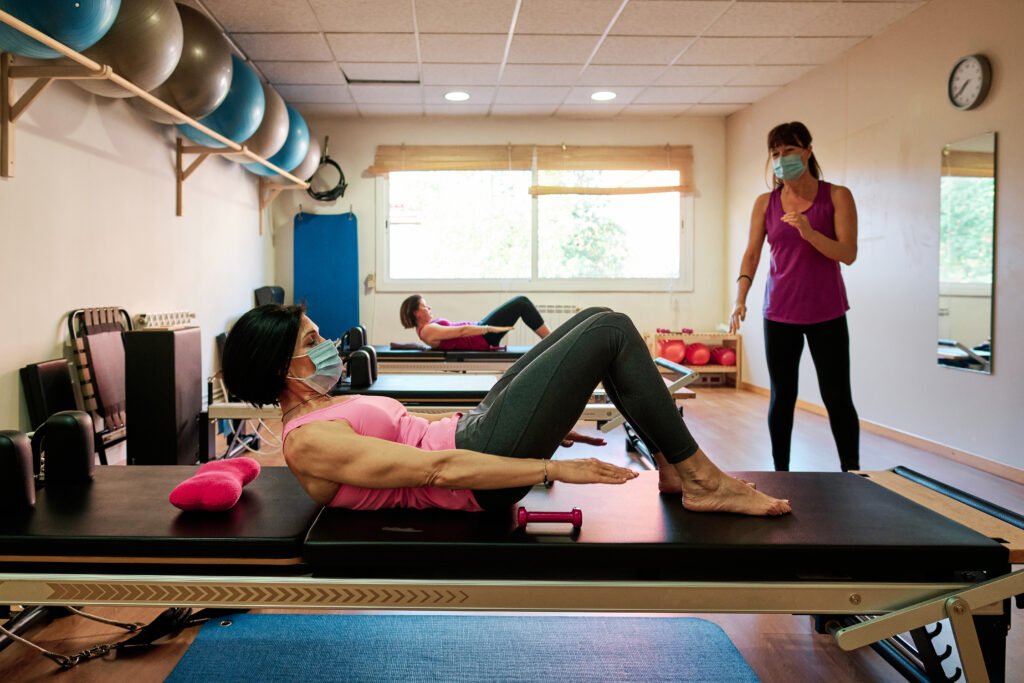
Integrating mindful breathing techniques into your Pilates routine can elevate core engagement and support spinal alignment. Focusing on strengthening the deep abdominal muscles stabilizes the pelvis and alleviates pressure on the lower back, which relieves back pain. Exercises such as “Pelvic Curl” develop flexibility and control in the spine, further preventing back discomfort. Maintaining awareness of body alignment throughout exercises avoids common postural issues like rounded shoulders. Regular practice of Pilates not only encourages muscle balance but also reduces the risk of developing chronic back pain.
– Practice deep, diaphragmatic breathing to engage core muscles effectively during all exercises.
– Strengthen the lower back with “Bridge Pose,” allowing for improved lumbar support.
– Use “Single Leg Circles” to enhance hip and core interaction for better posture.
– Focus on “Arm Reaches” to open the chest and counteract rounded shoulders.
– Commit to routine consistency to experience lasting improvements and relief.
By adhering to these techniques and incorporating them regularly, individuals can experience substantial improvements in posture and reduced back pain.
Pilates for Better Posture: Exercises to Combat Desk Job Slouch
Pilates exercises play a pivotal role in improving posture, especially in counteracting the slouch that often results from desk jobs. Essential Pilates movements such as “Plank” and “Pelvic Curl” target core strength, which is vital for spinal support and alignment. Given the tendency of desk jobs to encourage slouching, adopting Pilates can effectively counter these adverse effects. Regular practice not only strengthens the core but also improves body awareness and flexibility, all of which contribute to better posture.
| Exercise | Target Area | Benefits | Focus Points |
|---|---|---|---|
| Spine Stretch Forward | Upper Back, Hamstrings | Opens upper back, stretches hamstrings, aligns posture | Lengthen spine and keep hips grounded |
| Wall Roll Down | Spine, Core | Relieves tension in the back, re-aligns spine | Maintain controlled movement |
| Cat-Cow Stretch | Spine, Shoulders, Neck | Improves spinal mobility, relieves back discomfort | Smooth transitions between movements |
| Chair Pose | Core, Glutes, Back | Activates core muscles, strengthens the glutes and back | Proper body alignment during sitting |
| Plank | Core, Shoulders, Back | Strengthens the core, stabilizes posture | Engage the core throughout movement |
– Perform “Spine Stretch Forward” to open the upper back and straighten the posture.
– Implement “Wall Roll Down” as a quick reset during office hours to realign the spine.
– Use “Cat-Cow Stretch” for dynamic spinal movement and relief.
– Include “Chair Pose” to activate core muscles in a seated position.
– Combine “Plank” variations to tackle specific posture challenges like anterior pelvic tilt.
Integrating Pilates into your fitness routine can lead to substantial improvements in posture, lessening the discomfort associated with prolonged sitting in desk jobs.
How Pilates Improves Balance and Prevents Falls in Older Adults
Pilates offers tremendous benefits for older adults, especially in enhancing core strength, which is essential for improving balance and stability. Engaging in Pilates regularly increases body awareness and alignment, critical elements in maintaining excellent posture. Through controlled movements, Pilates promotes better coordination, enabling older adults to navigate daily activities more safely. The emphasis on breathing and mindfulness further improves concentration and alertness, contributing significantly to fall prevention.
| Exercise | Target Area | Benefits | Focus Points |
|---|---|---|---|
| Standing Leg Lifts | Core, Lower Body | Enhances stability, strengthens legs | Focus on control and alignment |
| Seated Twists | Spine, Obliques | Improves spine flexibility, strengthens obliques | Rotate from the waist |
| Bird Dog | Core, Lower Back, Hips | Improves balance, strengthens core and back | Keep the body aligned |
| Rolling Like a Ball | Core, Spine, Hips | Enhances spinal mobility and balance | Engage the core for stability |
| Footwork | Legs, Glutes, Core | Strengthens legs, provides stability, aids in posture | Focus on controlled movement |
– Use “Standing Leg Lifts” for added focus on lower body strength and stability.
– “Seated Twists” are beneficial for enhancing spine flexibility and balance.
– “Bird Dog” targets core stability, essential for everyday movements.
– Practice “Rolling Like a Ball” for dynamic balance and overall agility.
– “Footwork” exercises assist in strengthening legs, pivotal for fall prevention.
With Pilates, older individuals can perform daily activities with greater ease and confidence, significantly reducing the risk of falls.
Pilates Moves to Fix Bad Posture and Boost Confidence
Pilates exercises effectively target and strengthen the core muscles, crucial for maintaining proper posture. Improved core strength aligns the spine, thus reducing strain on the back and neck during daily activities. Regular practice of Pilates enhances body awareness, helping individuals recognize and correct poor posture habits. By improving posture, Pilates boosts overall confidence, leading to a more assertive and poised presence in both personal and professional environments.
| Exercise | Target Area | Benefits | Key Focus |
|---|---|---|---|
| Roll Over | Spine, Abs, Hamstrings | Increases spine flexibility, stretches the hamstrings | Focus on controlled movements and smooth transitions |
| Saw | Spine, Hamstrings, Abs | Improves spinal rotation, stretches the back and hamstrings | Keep both legs extended and active |
| Spine Twist | Spine, Obliques, Shoulders | Enhances torso rotation and flexibility | Maintain a stable pelvis and twist from the spine |
| Cat-Cow Stretch | Spine, Shoulders, Neck | Increases spine flexibility, releases tension in the back | Synchronize breath with movement |
| Cobra Pose | Spine, Chest, Abs | Opens chest and strengthens spine | Engage the lower body for stability |
| Single Leg Stretch | Hamstrings, Core, Hips | Stretches hamstrings, activates the core | Keep the pelvis stable and avoid rocking |
| Chest Expansion | Chest, Shoulders, Back | Opens the chest, strengthens the back and shoulders | Engage the back muscles for a deeper stretch |
| Rolling Like a Ball | Spine, Core, Hamstrings | Improves spinal mobility and stretches the back | Keep the ball shape and move with control |
| Teaser | Core, Spine, Hips | Enhances spinal flexibility and strengthens the core | Engage the core for a smooth roll-up |
| Shoulder Bridge | Spine, Glutes, Abs | Mobilizes the spine, strengthens the glutes and abs | Maintain a straight line from shoulders to knees |
– “Pilates Mat Exercises” target muscles supporting a proper posture.
– “Shoulder Bridge” builds essential core strength to fix rounded shoulders.
– “Chest Expansion” exercises actively combat slouching by encouraging an open chest.
– “Clamshells” strengthen hip abductors to stabilize the pelvis and maintain posture.
– “Roll Over” increases spinal mobility, encouraging better postural habits.
Integrating Pilates into your daily routine not only promotes better breathing and balance but also boosts confidence, supporting a healthier lifestyle.
Core Pilates Tips for Enhanced Stability and Balance
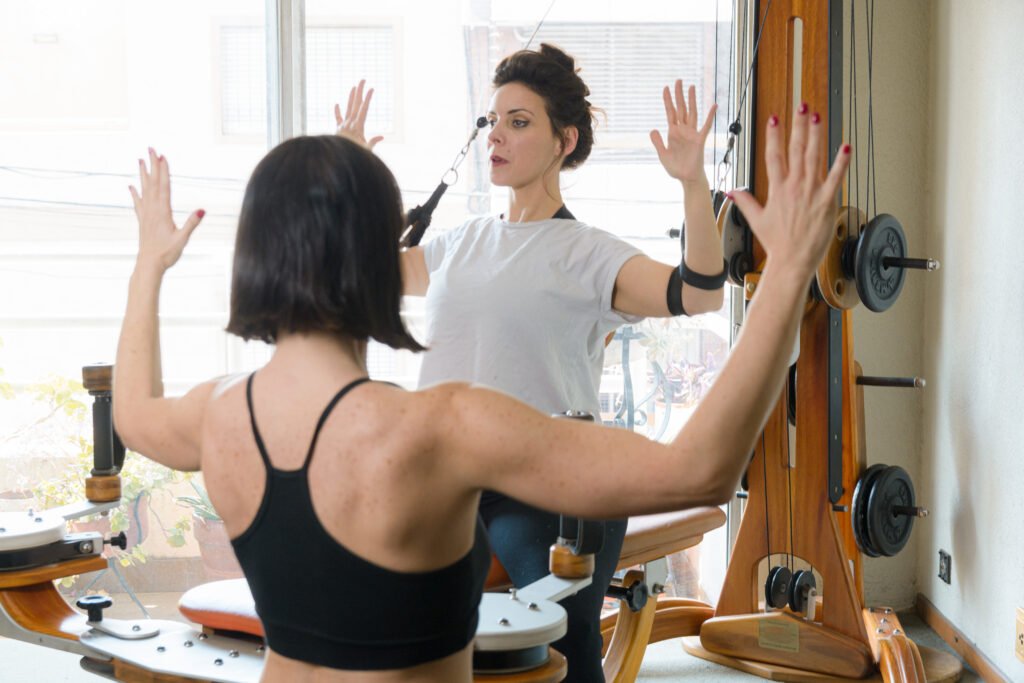
To enhance your stability and build a strong foundation for better posture, it’s essential to focus on engaging your core muscles consistently. Incorporate specific Pilates exercises like planks and bridges to effectively target and strengthen the core. Maintain proper alignment and mindfulness during your practice to enhance balance and prevent posture-related issues.
– Incorporate “Forearm Plank” to challenge core stability.
– Practicing “Side Plank” effectively targets obliques and enhances balance.
– “Bridge” exercises strengthen the back extensors and glutes for posture support.
– “Leg Pull Front” offers dynamic core engagement, important for overall alignment.
– “Reverse Plank” builds upper body strength and opens the chest for better posture.
By developing body awareness through controlled movements and breathing techniques, Pilates can lead to lasting positive changes in both standing and sitting habits.
How Pilates Enhances Core Strength
Pilates is exceptional in targeting deep core muscles, like the transverse abdominis and obliques, essential for maintaining a strong and stable posture. Consistent practice of Pilates exercises improves spine and body alignment, contributing to better posture whether standing or sitting. Enhanced core strength from Pilates reduces the risk of back pain by providing better support and stability to the lower back.
| Exercise | Target Area | Benefits | Focus Points |
|---|---|---|---|
| Bridge Pose | Core, Glutes, Lower Back | Strengthens lower back and glutes, alleviates tension | Ensure proper pelvic alignment |
| Single Leg Circles | Hips, Core, Thighs | Strengthens core and hip muscles, improves flexibility | Keep the pelvis stable |
| Arm Reaches | Shoulders, Chest, Core | Opens chest, strengthens shoulders and core muscles | Maintain control throughout motion |
| Pelvic Curl | Core, Spine, Lower Back | Mobilizes spine, strengthens core, alleviates back pain | Engage the pelvic muscles properly |
| Teasers | Core, Abdominals | Builds core strength, improves balance | Keep the body aligned in the position |
– Practice “Plank to Cobra” to activate core and spine simultaneously.
– “Teaser” strengthens both the front and sides of the body for complete core stability.
– “Double Leg Stretch” aligns posture by developing core coordination.
– “Control Balance” offers advanced challenge to core stability and balance.
– “Crisscross” focuses on oblique strength crucial for healthy spine support.
With a stronger core, Pilates practitioners often experience increased confidence and ease in their daily activities, promoting healthier posture naturally.
Pilates Exercises for Core Strengthening
Pilates exercises emphasizing core strengthening are vital for improving posture. A strong core stabilizes the spine, reducing strain and enhancing overall alignment during daily activities. Incorporating Pilates can lead to more efficient movement patterns in both standing and sitting, positively affecting posture, decreasing back pain, and discomfort.
– “Roll-Up” challenges core endurance and spinal articulation.
– “Saw” incorporates spinal rotation for core engagement.
– “Scissors” offers a dynamic approach to abs and back muscle balance.
– “Swan Dive” extends the spine, countering common postural issues.
– “Swimming” combines core and back strength to improve overall posture.
Regular Pilates practice enhances body awareness, encouraging healthier posture habits throughout various aspects of life.
Creating a Pilates Routine for Core Strength and Posture Improvement
Identifying key muscle groups targeted by Pilates to enhance core strength and improve posture is essential — focusing on the abdominals, obliques, and back muscles. Consistency in practice is vital; hence, developing a regular Pilates routine ensures sustainable improvements in core strength. Incorporating specific exercises such as the Plank, Swan, and Hundred effectively supports posture correction by detailing their impact on core stability and alignment.
| Exercise | Target Area | Benefits | Key Focus |
|---|---|---|---|
| The Hundred | Abdominals, Obliques, Shoulders | Activates the core, improves circulation, strengthens shoulders | Control and breath coordination |
| Swan | Spine, Back, Core | Increases spinal flexibility, strengthens the back and core | Lengthen the spine and open chest |
| Roll-Up | Abs, Spine, Hamstrings | Improves spinal articulation, strengthens abdominal muscles | Focus on a slow, controlled roll |
| Side Plank | Core, Obliques, Shoulders | Strengthens obliques and core, stabilizes spine | Engage core and maintain alignment |
| Plank | Core, Shoulders, Back | Strengthens core, back, and shoulders | Keep the body in a straight line |
| Bridge | Core, Glutes, Lower Back | Activates glutes and core, strengthens lower back | Keep hips aligned and engage core |
| Teaser | Abs, Core, Back | Enhances overall core strength and stability | Maintain a straight body alignment |
| Reverse Plank | Shoulders, Core, Back | Strengthens upper body, engages core and legs | Open chest, engage the core |
| Leg Pull Front | Core, Back, Glutes | Strengthens the core and improves body alignment | Keep the legs engaged and straight |
| Double Leg Stretch | Abs, Spine, Hips | Strengthens core and develops coordination | Focus on synchronized movement |
– Follow a weekly schedule incorporating varied Pilates exercises.
– Engage in guided sessions with a certified instructor for refined techniques.
– “The Hundred” establishes key breathing patterns that assist core engagement.
– Regularly practice “Swan” for spine lengthening and postural support.
– Include “Planks” and its variations to challenge overall core strength.
Enhancing your core strength through Pilates can lead to improved balance, reduced back pain, and enhanced standing and sitting habits.
Can Practicing Pilates Regularly Transform My Standing and Sitting Habits?
Engaging in Pilates regularly can significantly improve your posture through enhanced core strength, flexibility, and body awareness. The focus on core muscles in Pilates stabilizes the spine and leads to better standing and sitting habits. Through consistent sessions, Pilates promotes muscle balance, reducing the strain and tension that contribute to poor posture.
– Integrate plenty of core-focused exercises into your routine for optimal results.
– Maintain awareness of alignment in daily activities like driving or desk work.
– Incorporate Pilates principles of breathing for relaxation and muscle coordination.
– Pair Pilates with ergonomic assessments to address potential postural stressors.
– Attend group classes for motivation and proper form guidance in all exercises.
Pilates improves overall body awareness, making it easier to maintain correct posture both while sitting and standing, leading to long-term benefits for your musculoskeletal health.
How Does Core Strength Impact My Posture?
Core strength is crucial for maintaining proper posture by providing support to the spine and pelvis. A strong core facilitates body stabilization, reducing strain on your back and aiding you in standing and sitting more upright. Pilates exercises specifically target core muscles, which improves alignment and balance.
– The “Roll Up” promotes overall core conditioning necessary for healthy posture.
– “Pelvic Tilt” enhances lower back stability and core control, ensuring upright posture.
– Developing core strength aids in correcting common postural ailments like forward head posture.
– Regularly performing exercises like “Side Bend” targets obliques, aiding in balanced posture.
– Incorporating Pilates helps alleviate strain from poor habitual posture tendencies.
By enhancing core strength through Pilates, practitioners often notice improvements in body mechanics, which promote better postural alignment naturally.
What Specific Pilates Exercises Are Best for Improving Posture?
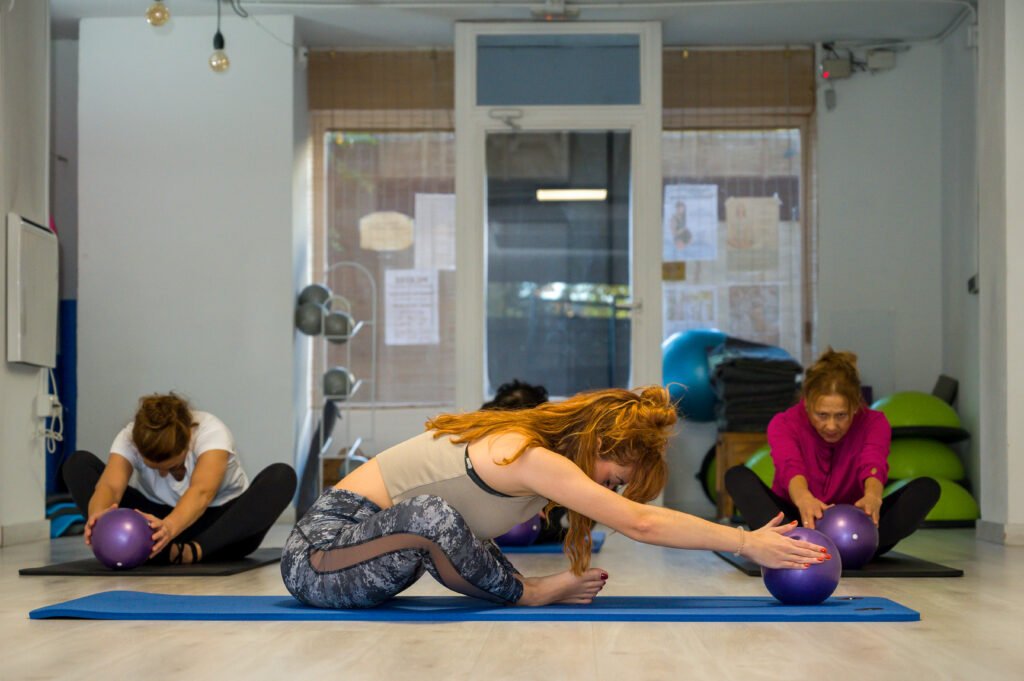
Certain Pilates exercises are especially effective in promoting better posture. These exercises target the core and improve spinal alignment, creating a healthier postural stance.
– The Roll-Up: Strengthens abdominal muscles which support better posture.
– Spine Stretch Forward: Encourages a natural alignment in both sitting and standing.
– Pelvic Curl: Engages and strengthens lower back and gluteal muscles.
– Shoulder Bridge: Builds strength in hips and lower back for a stable, upright posture.
– Single Leg Kick: Enhances core stability and strengthens back extensors for alignment.
Regularly incorporating these exercises into your routine can lead to significant improvements in posture, creating a more aligned and balanced body.
How Often Should I Practice Pilates to See Improvements in My Posture?
To see noticeable improvements in your posture with Pilates, practicing two to three times a week is generally recommended. Consistency is critical; regular practice helps reinforce postural habits and build core strength over time. Beginners may start with shorter sessions, gradually increasing in duration as strength improves.
– Initiate practice with 20-minute sessions to build endurance gradually.
– Progress to include full-length classes as stamina allows.
– Combine Pilates with mindful daily posture checks for enhanced effects.
– Seek professional guidance for modifications suitable for your needs.
– Stay patient and observe progress over weeks of sustained effort.
Individual outcomes may vary, but many practitioners report improved posture within a short span of consistent practice.
Nurturing a Lifetime of Better Posture Through Pilates
The transformative power of Pilates lies in its holistic approach to enhancing core strength, body alignment, and posture. Through dedicated practice, individuals can realize significant improvements in both standing and sitting habits. Whether you’re seeking relief from back pain, better balance, or increased confidence, Pilates offers a versatile regimen for fostering these changes. Embrace the methods of Pilates regularly, and you’ll embark on a journey towards better posture, a healthier body, and a more vibrant lifestyle. Commit to this practice, and let Pilates revolutionize the way you move through life.

